Rome is one of the most beautiful and romantic cities in the world. That is to say that, no matter what your expectations, you will find a city that goes beyond your wildest dreams. Even after having lived 20 years only 60km from Rome, to me, it is still a city full of mysteries and, most importantly, charm.
As Italy’s capital, Rome is a city that has seen many important periods in history, including Ancient Rome and the Renaissance. This means that wherever you go in this wonderful city you will find something of interest to see.
Towering obelisks, magnificent fountains, and ancient ruins are just a few of the reasons why Rome is one of the most popular tourist destinations in Europe.
Truth is, If you’ve never been there before, Rome can be overwhelming and even a bit scary.
But what happens when you only have one day to visit the Italian capital?
If you don’t know what to do, this is a good place to start. This one-day tour takes in some of the most important monuments in the city. That is to say that this walking tour covers the main sights of Rome, but there are still lots of things you can do if you want to discover more of the Italian capital during your visit. I would actually recommend spending at least two or three days in the city, but if you only have a single day, then here’s the best way to use it:
Welcome to Rome!

Start your journey at Termini station
This is Rome’s largest train station and it’s very well connected with all means of transportation like buses or metros. You’ll find it easy to get here from any point in Italy or Europe as well as from Fiumicino airport by train or bus. If you’re coming from Ciampino airport though, I strongly recommend not taking the Terravision bus but instead a taxi.
Once you are in Termini, following this guided tour you will only have to rely on your foot as a transportation method. This is a two-hours walk if you don’t consider any stops, but spread during the whole day can be easily achieved by almost anyone. Of course, if you have certain conditions and don’t feel like walking, there are always alternative transports you can take, like buses and metros.
First stop Piazza di Spagna
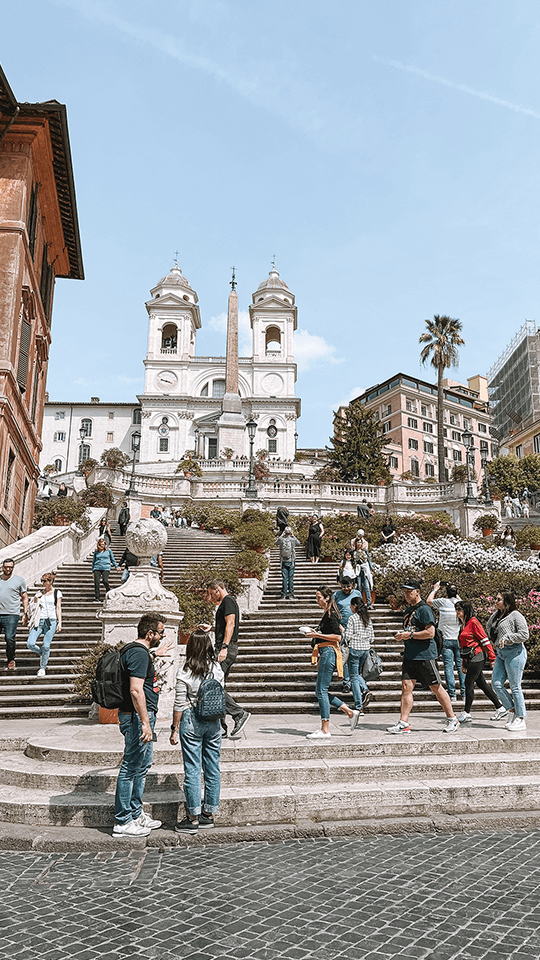
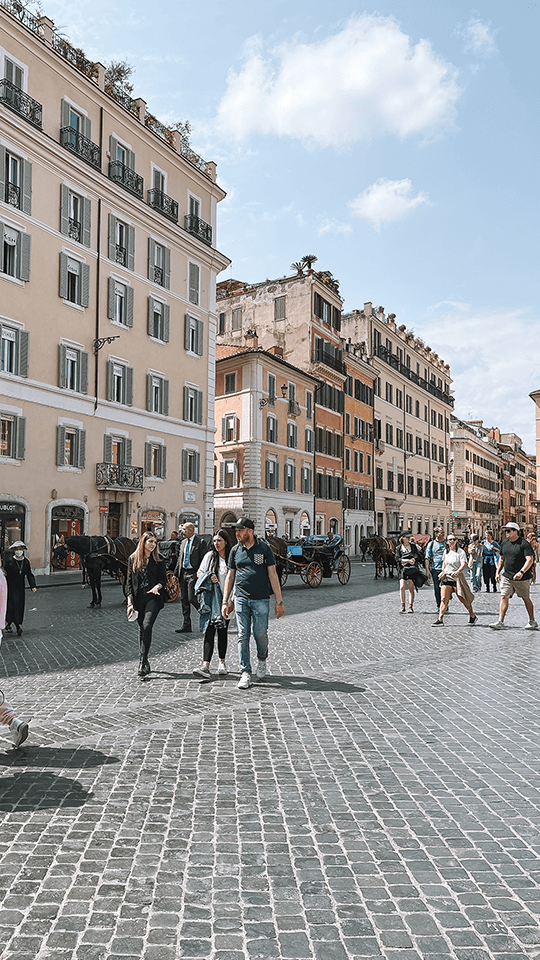
I always found almost hilarious the fact that one of the most famous attractions in Rome has the name of another country. Piazza di Spagna was named after the Spanish Embassy that resides there, contrarily the famous Spanish steps are called Scalinata Della Trinità Dei Monti. The area became so famous in the 1700s among English people, especially for the 135 steps that give you a spectacular view over the city.
If you climb the stairs you will be able to admire the square with all its people and the “Barcaccia” fountain representing a sinking boat. Be careful though, as of 2019 it’s not possible to sit on the stairs, or you could face a fine of up to 400 euros.
To be a more conscious traveler, one thing I ask of you is to not ride one of the horse carriages you can find there. The animals are exploited and it is heartbreaking to see their sad eyes wandering the square waiting for people to use them for their amusement.
Toss a coin in the Trevi fountain and go shopping at the Galleria Alberto Sordi

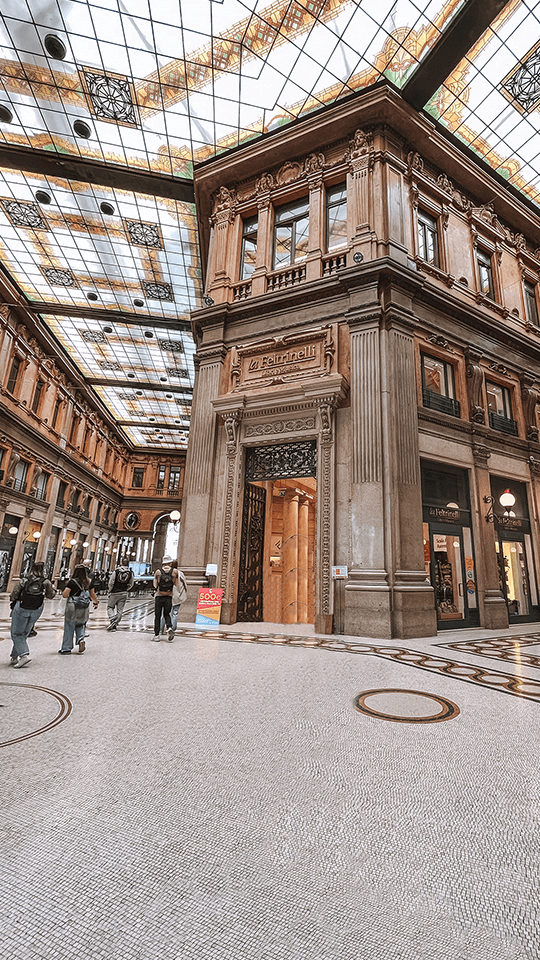
After Piazza di Spagna, it won’t be long until you get to another Roman icon: the Trevi Fountain. Erected on the side of the 17th-century Palazzo Poli, the Trevi fountain became even more famous thanks to the movie La Dolce Vita in which the main character danced in its waters in a ballgown.
What everybody knows is that when you go visit it, you have to toss a coin in the water to make sure you will return to the Eternal City. To do it right, you have to throw with your right hand over your left shoulder, with your back facing the fountain. What you might not know, is that almost 3.000 euros are thrown in the fountain every day and that all the money is used by the charity association Caritas.
On the way to the Pantheon, you can make a fashion stop in Via Del Corso and at the Galleria Alberto Sordi, an art-nouveau shopping arcade named after the famous Roman actor who passed away in 2003.
Pantheon and lunch stop
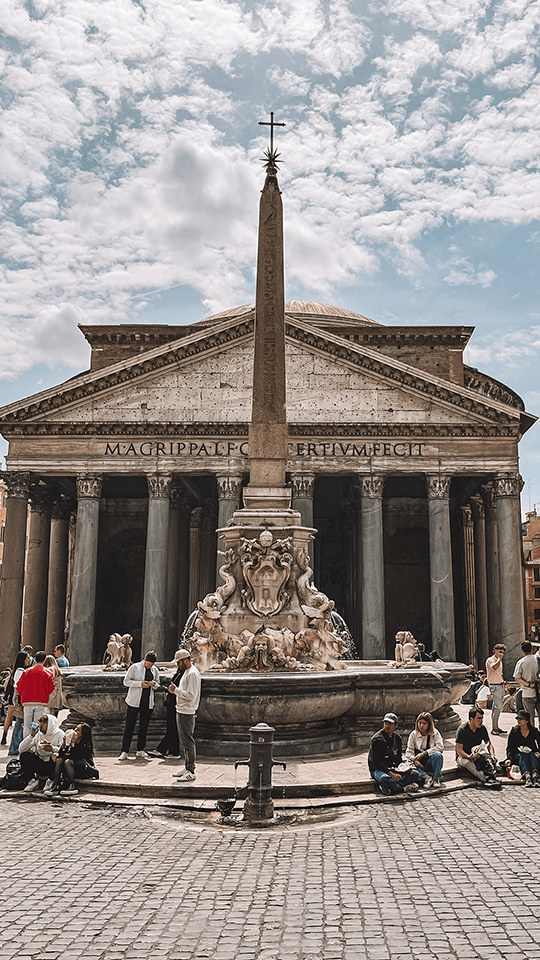
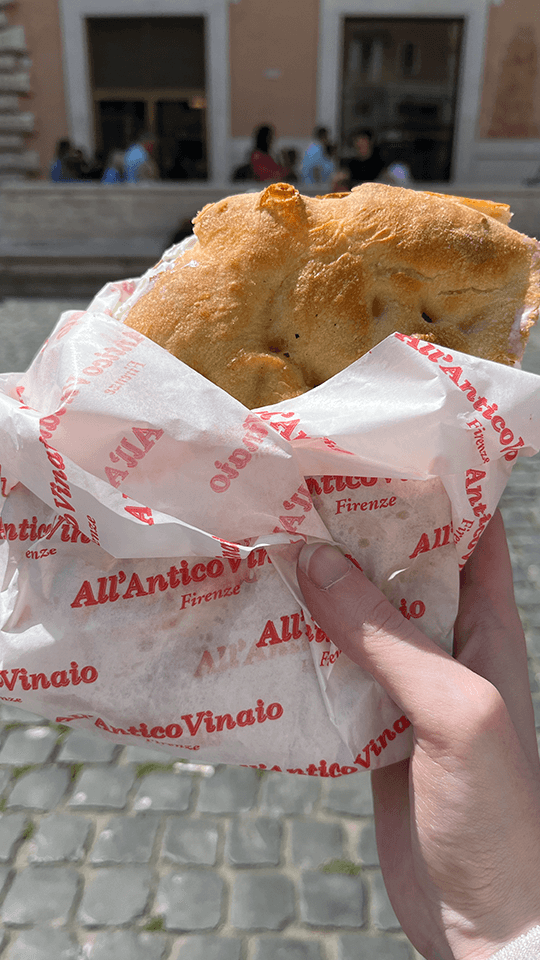
Not far from the Trevi Fountain you will find the Pantheon, in Greek literally “Temple of all the gods”. Initially built by Marcus Agrippa in 27BC, it has then been rebuilt on top of it by Hadrian that however kept the original inscription. The Temple was then turned into a Christian church. As a result, its sacredness prevented it from being demolished in medieval times and it is now the best-preserved of Rome’s ancient monuments.
If you’re hungry, the Pantheon area is a great place to find a bite: it is full of trattorias, cafes, and restaurants to choose from. My recommendation is to go grab a panini at All’Antico Vinaio, originally from Florence and now open in Rome with a Roman twist on ingredients and flavors.
Fori Imperiali and Altare Della Patria


From the Pantheon, you can then keep walking until the Via Dei Fori Imperiali, where you can find remains of four different Imperial Forums: Traiano, Augusto, Cesare, and Nerva. Even though most of them have been buried when Mussolini started his works on the road to building his new city (Littoria, now Latina), thanks to subsequent excavations it is still possible to admire what is left of them.
Right after that, you will find yourself in Piazza Venezia where you’ll be able to gaze at the Vittoriano (or Altare Della Patria), possibly one of my favorite buildings to look at. Not only it is artistically and architecturally pleasing to look at, but it is also centered on the unification of the country, which makes it one of the national symbols of Italy. It has been indeed dedicated to Vittorio Emanuele II, the first king of a unified Italy. If all this wasn’t enough, the building is situated in the center of Ancient Rome and connects the old city to the modern one through roads that branch out in a radial pattern.
Colosseo
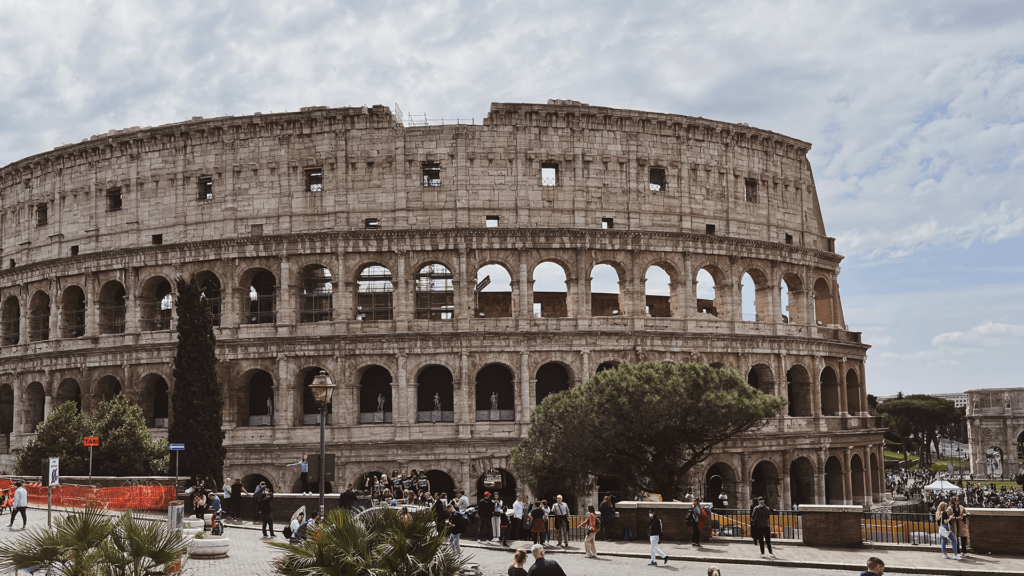
Walk a bit south and you will see one of the seven wonders of the modern world: the Colosseo.
How weird life is, still gazing after more than 2000 years at a forum where lions and gladiators used to fight and kill each other. Truth is, the Colosseo was a lot more than that. Its original name is Anfiteatro Flavio, and it is the biggest Roman amphitheater in the world. It has a capacity of up to 87.000 people, as much as the Wembley Stadium, and it symbolizes the power and drama of ancient Rome. It was indeed used for gladiatorial contests but also for public spectacles such as mock sea battles (for only a short time as the hypogeum was soon filled in with mechanisms to support the other activities), animal hunts, executions, re-enactments of famous battles, and dramas based on Classical mythology.
Even though we now consider those games to be barbaric, it is fascinating to think of how a single building brought together an entire civilization. And I challenge anyone to not wonder how astonishingly beautiful it would be to attend a play sitting in a building like that.
«Quamdiu stabit Colyseus stabit et Roma;
cum cadet Colyseus cadet et Roma;
cum cadet Roma cadet et mundus»
“As long as the Colosseum stands, Rome will stand.
When the Colosseum collapses, Rome will collapse.
When Rome collapses, the world will collapse.”
Giardino Degli Aranci + the best view of San Pietro


Our last stop of the day is a less touristic one, but nonetheless less charming. The Parco Savello, most commonly known as Giardino Degli Aranci (Orange Garden), is a great location if you want to end your day in Rome in style: if you arrive there at sunset, you’ll be able to enjoy a panoramic view of the city.
The Giardino Degli Aranci owes its name to the numerous orange trees that have been brought in from Spain to decorate the garden. There is a mystery surrounding these trees as it’s said their oranges are miraculous: don’t try and eat them though, it is forbidden!
Another peculiar characteristic of the garden is the view of the Basilica of San Pietro. As you enter the garden, the dome will look majestic to your eyes, but the more you get closer to the panoramic balcony, the smaller it will look.
This is not the only optical illusion of San Pietro you will find there, as just next to the Garden you can find the most intriguing view of the Basilica in all of Rome. Head over to the Villa del Priorato di Malta and peep into the keyhole on the door: you will not find a better view of the Vatican anywhere else.
As I mentioned right at the beginning of this post, it’s impossible to visit the Eternal City in just one day. Following this guide, though, you will be able to take a glimpse of the immense beauty of Rome.
What is the one thing that you cannot skip every time you visit Rome?